Art History - Quiz 1
1/47
There's no tags or description
Looks like no tags are added yet.
Name | Mastery | Learn | Test | Matching | Spaced |
|---|
No study sessions yet.
48 Terms
Byzantine
Medieval art influenced by the Byzantine Empire; Christian devotional art typically featuring gold backgrounds, flattened space, abstract 2D subjects, and sharp contours
Altarpiece
A large, religious artwork decorating the altar of a Christian church
Diptych/triptych/polyptych
Usually an altarpiece consisting of 2, 3, or multiple panels joined together by hinges
Humanism
A system of thought inspired by Ancient Greece and Rome that praised humanity’s capacity to achieve greatness through knowledge and free will
Naturalism
Depicting a subject, like the human figure, so that it resembles how we see that subject in the real world
Foreshortening
A technique that creates the illusion that an object is receding or projecting into space
Chiaroscuro
A technique which contrasts light and dark colors to suggest depth or volume
Patron
An individual who commissions work from and financially supports an artist
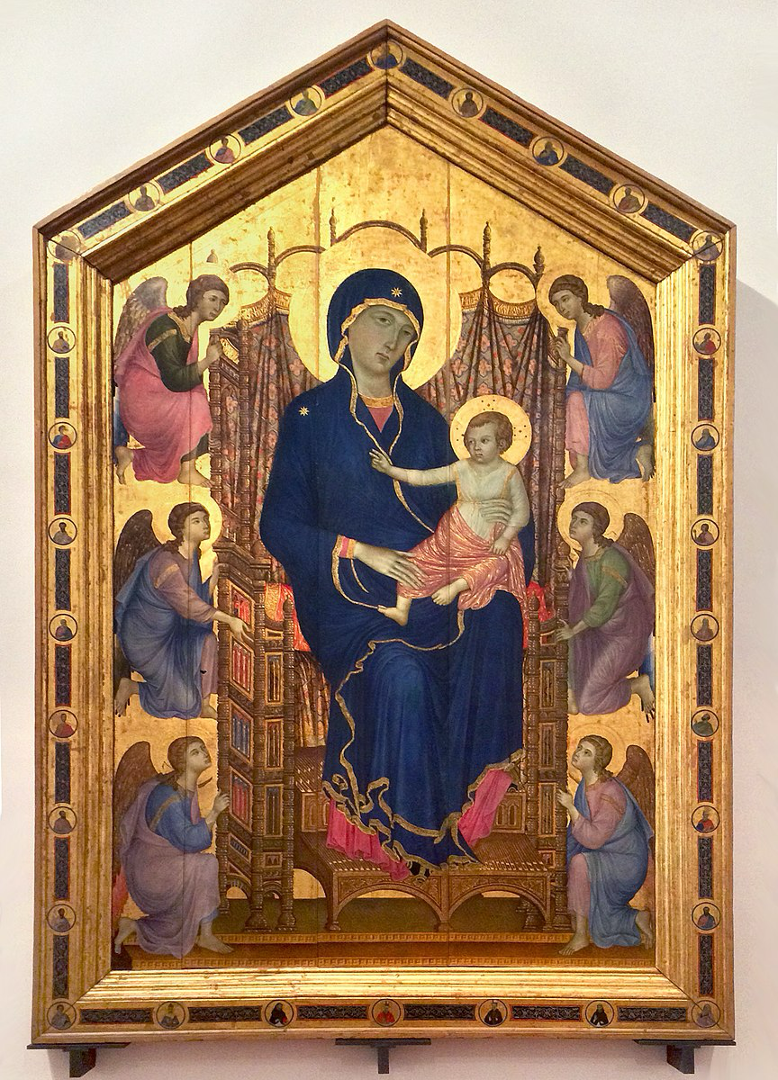
Duccio, Maestà, . 1285 (late medieval)
Work made as thank you to Virgin Mary for helping Siena win battle
Miracle-making artwork
Figures slightly more realistic - Virgin still large, gold background
Lapis lazuli - expensive - expensive materials show wealth/power of Siena
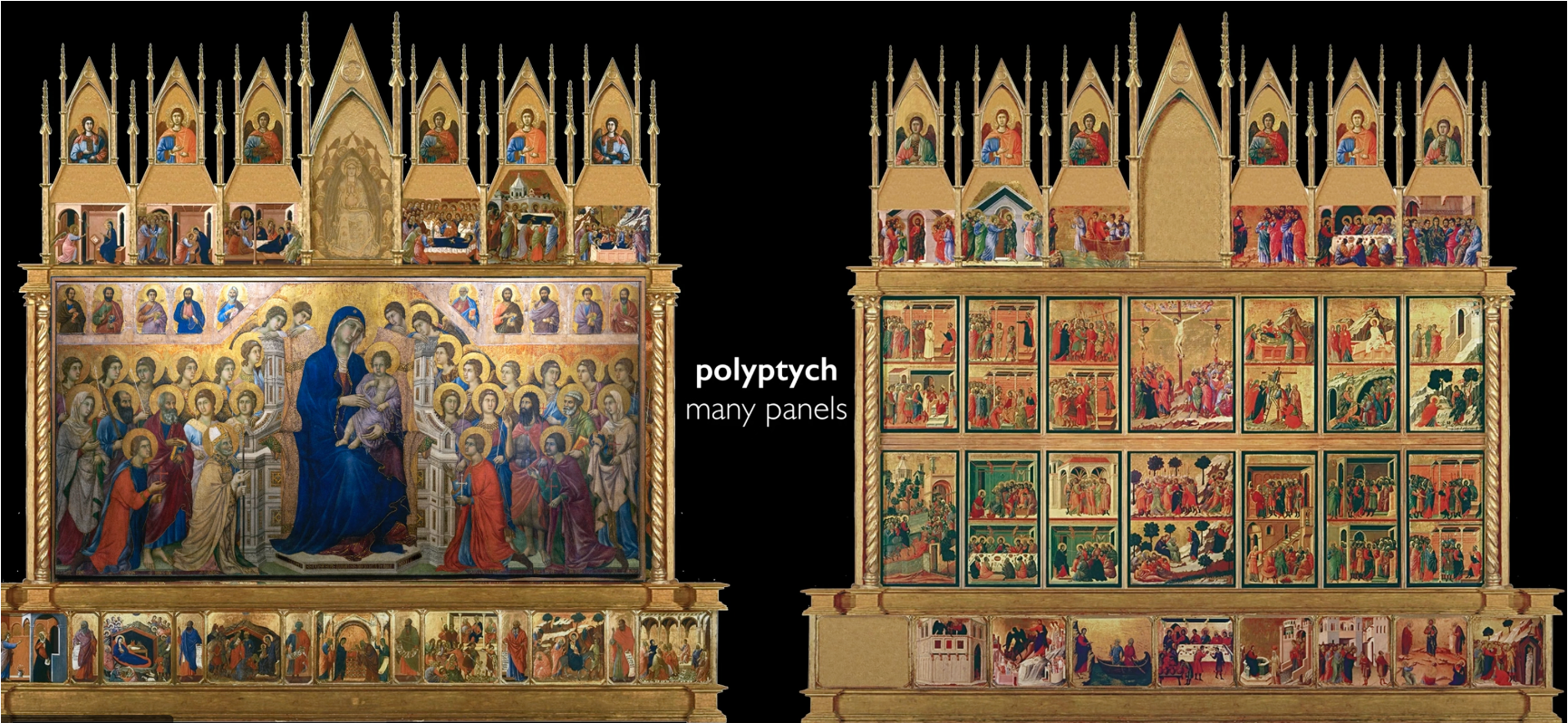
Duccio, Siena Cathedral Maestà, 1308-11 (late medieval)
Break away from Byzantine styles - creates space (foreshortening)
Bodies a little more realistic, volume in fabric, sense of depth

Cimabue, Maestà, 1306-10 (late medieval)
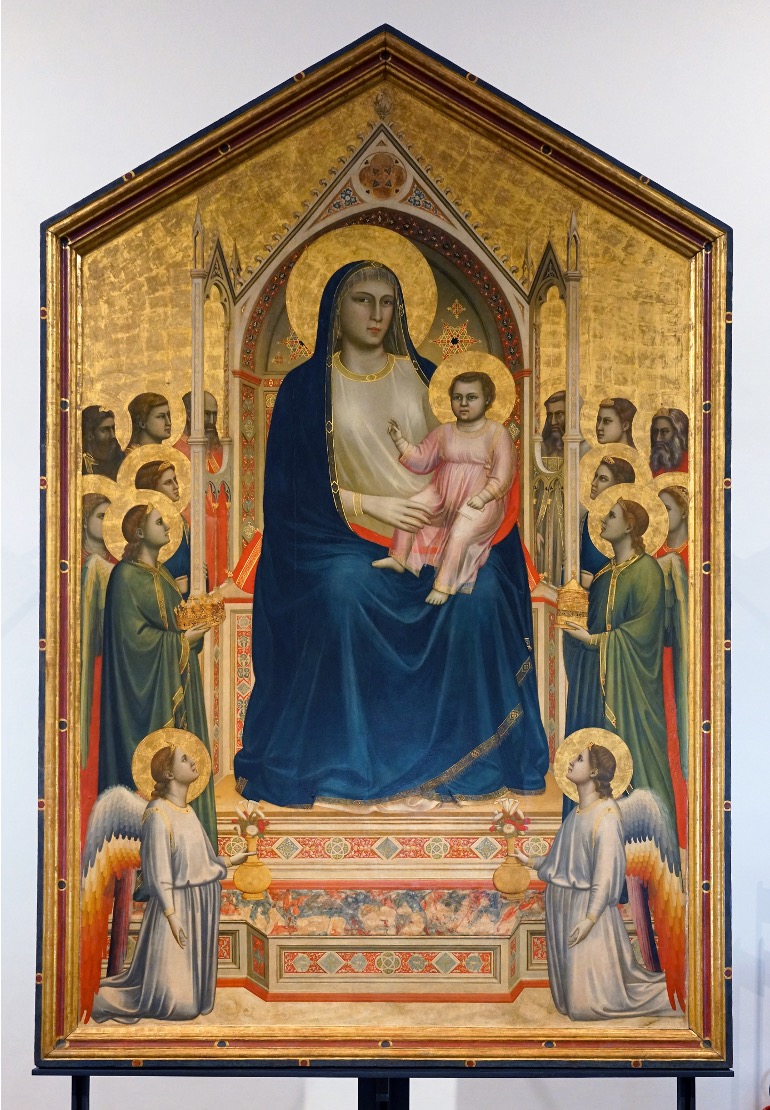
Giotto, Maestà, 1306-10 (late medieval)
experiments with space, overlapping features, not everyone’s full face is visible (more realistic), recession of steps to throne, detail (marble)
Faces turning to look at Virgin Mary (thinking about what real people would do)
More human, worldly body of Mary in this one (highlights to indicate her breast - humanism)
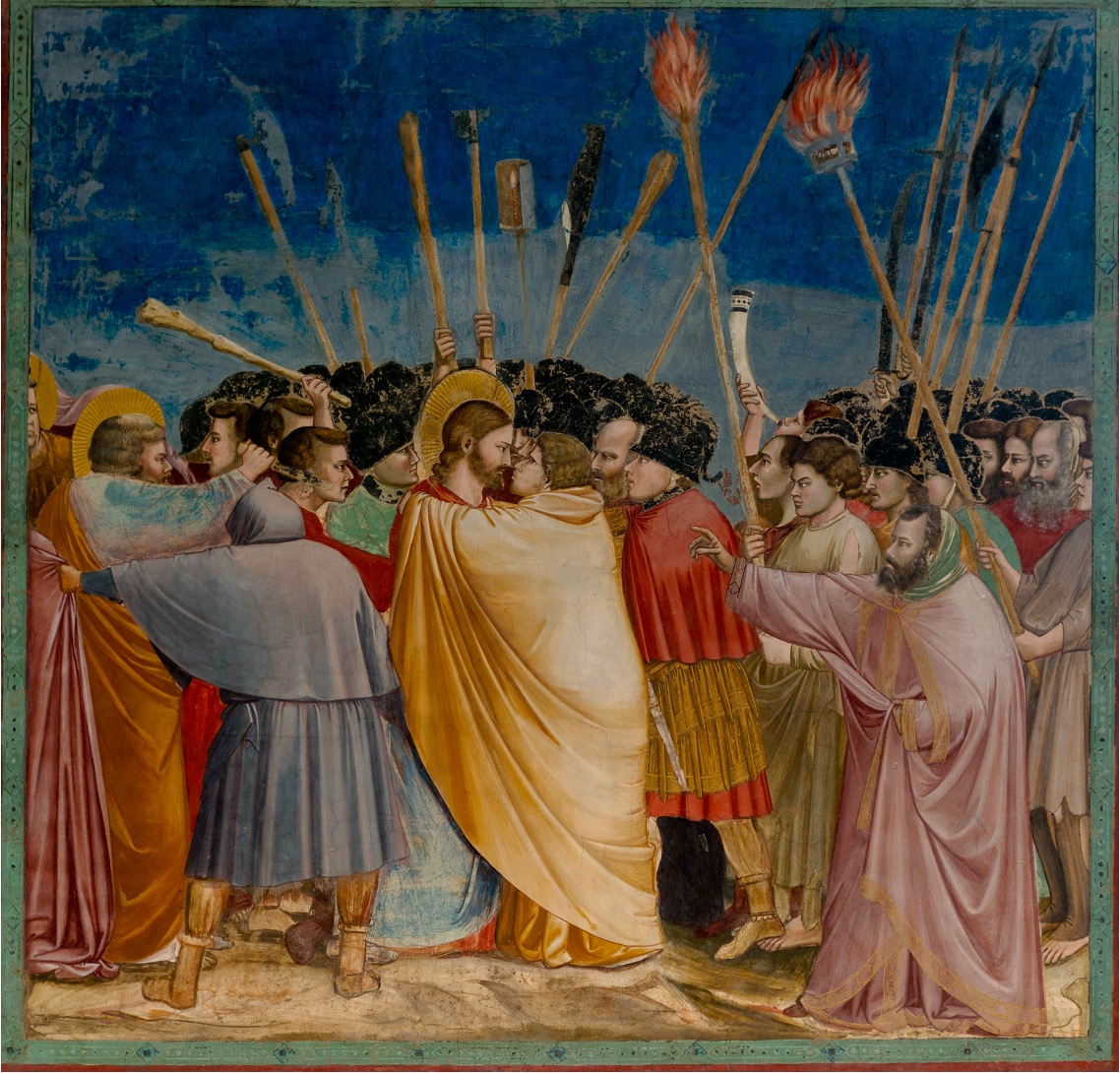
Giotto, Kiss of Judas in the Arena Chapel, 1305 (late medieval)
Also called Betrayal of Christ
Less central grouping (more bodies), torches pointing to focal point, emotion, use of chiaroscuro, foreshortening (in people’s feet)
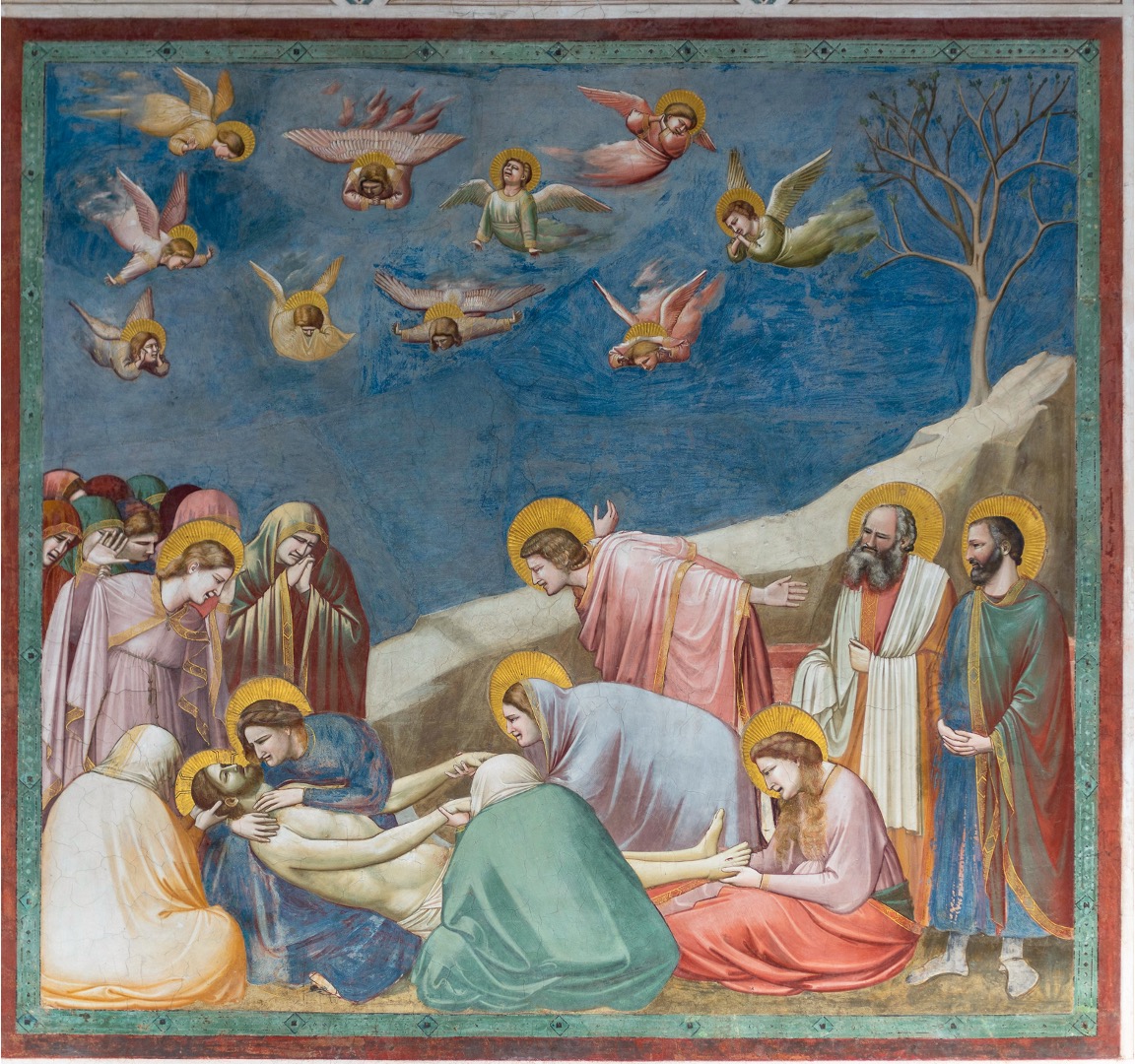
Giotto, Lamentation in the Arena Chapel, 1305 (late medieval)
More playful with colors, theatrical, facial expressions, active narrative, humanizing to Virgin Mary, angels have emotion
Depicting Christ as dead - humanizes him
Use of line - leading viewers eyes to Mary + Christ
Line
Used to define shapes and figures, but also to indicate motion, emotion, and other elements; can be vertical, horizontal, diagonal, or curvilinear
Shape
A property of a 2-D form; can be geometric or organic
Form
A 3-D shape or the illusion of dimensionality; can also be geometric or organic
Space
How an artist creates depth on the picture plane; often created through perspective
Color
Used to mimic reality, create atmosphere, highlight importance, or symbolize something else
Facture
The character or quality of the artists’s brush/pencil stroke or sculptural style; how an artist handles materials
Takeaways from Sep. 5
Siena and Florence were rival cities with differing approaches to depiction
Sienese artists, like Duccio, clung to Byzantine styles because they aspired to make Christian devotional art with a civic function (religious art that protected Siena)
Florentine artists, like Giotto, introduced naturalism and realistic space into their works in response to new ideas about humanism.
Classical antiquity
Ancient period in Greek and Roman history
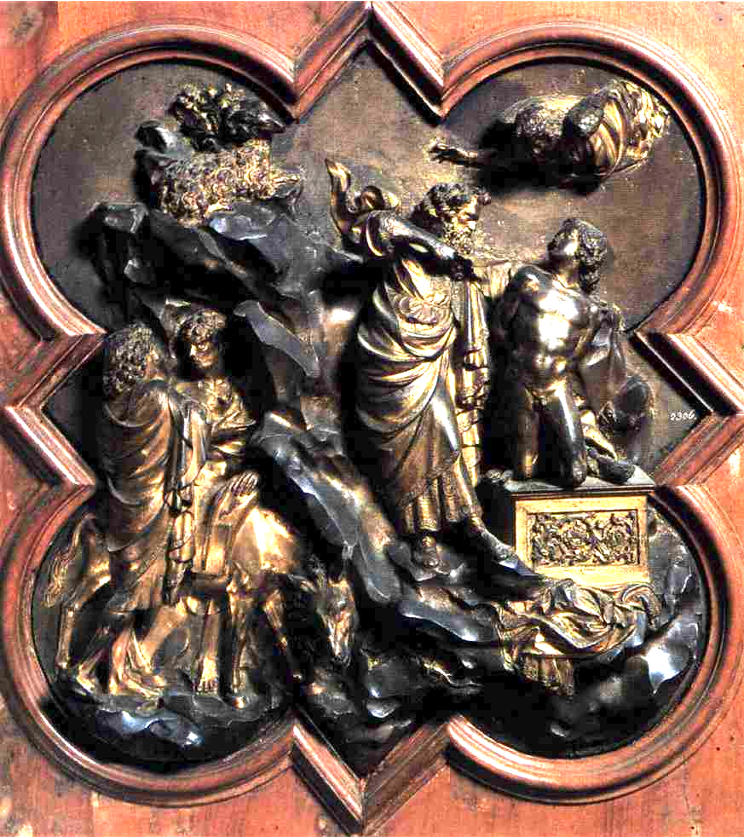
Lorenzo Ghiberti Sacrifice of Isaac - 1401 - Gilded bronze
Abraham slaughters Isaac to appease God but God says no stop don’t do it
Bodies are frontally facing viewers - Ghiberti won competition against Brunelleschi
Gilded
A panel painting or sculpture that is covered in thin, flattened sheets of pure gold leaf
Relief
In sculpture, any work in which the figures project from a supporting background. (two types of relief)
Linear perspective
A way to depict 3D space on a 2D plane that was invented in Florence in the early 15th century
Drawing method that shows the recession of space; things get smaller as they get further away and converge toward a single “vanishing point” on the horizon line
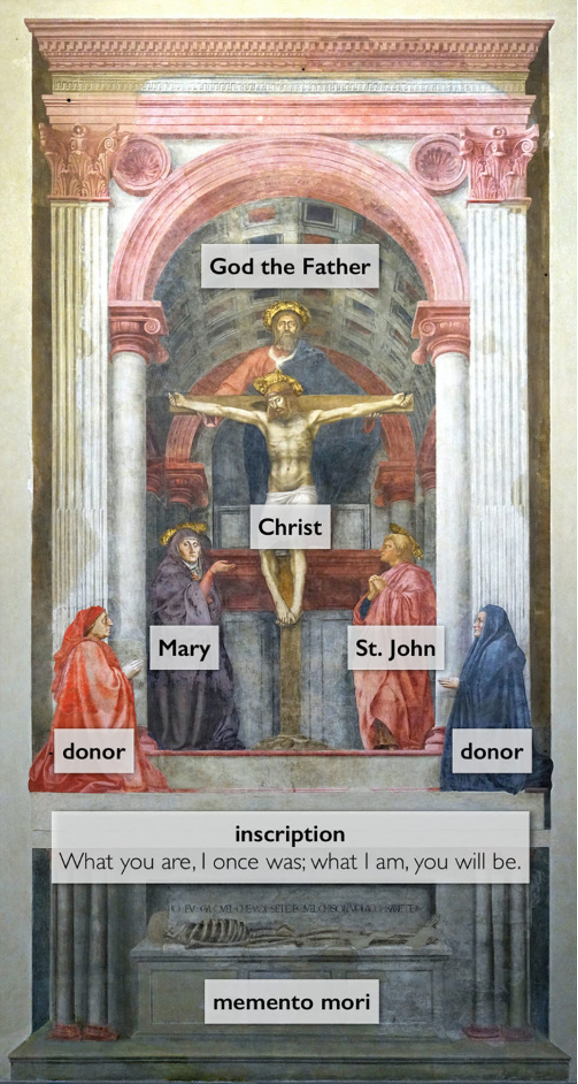
Massaccio, Holy Trinity - 1425-1428 fresco in the church of Santa Maria Novella, Florence
Used one-point or linear perspective
Used diagonal lines to converge where viewers would be kneeling so it looks realistic looking up at Christ
Fresco
A method of painting done rapidly in watercolor on wet lime plaster on a wall or ceiling (two types of fresco)
Giornata
From the Italian, “a day’s work”; the section of a fresco that is completed in a single day
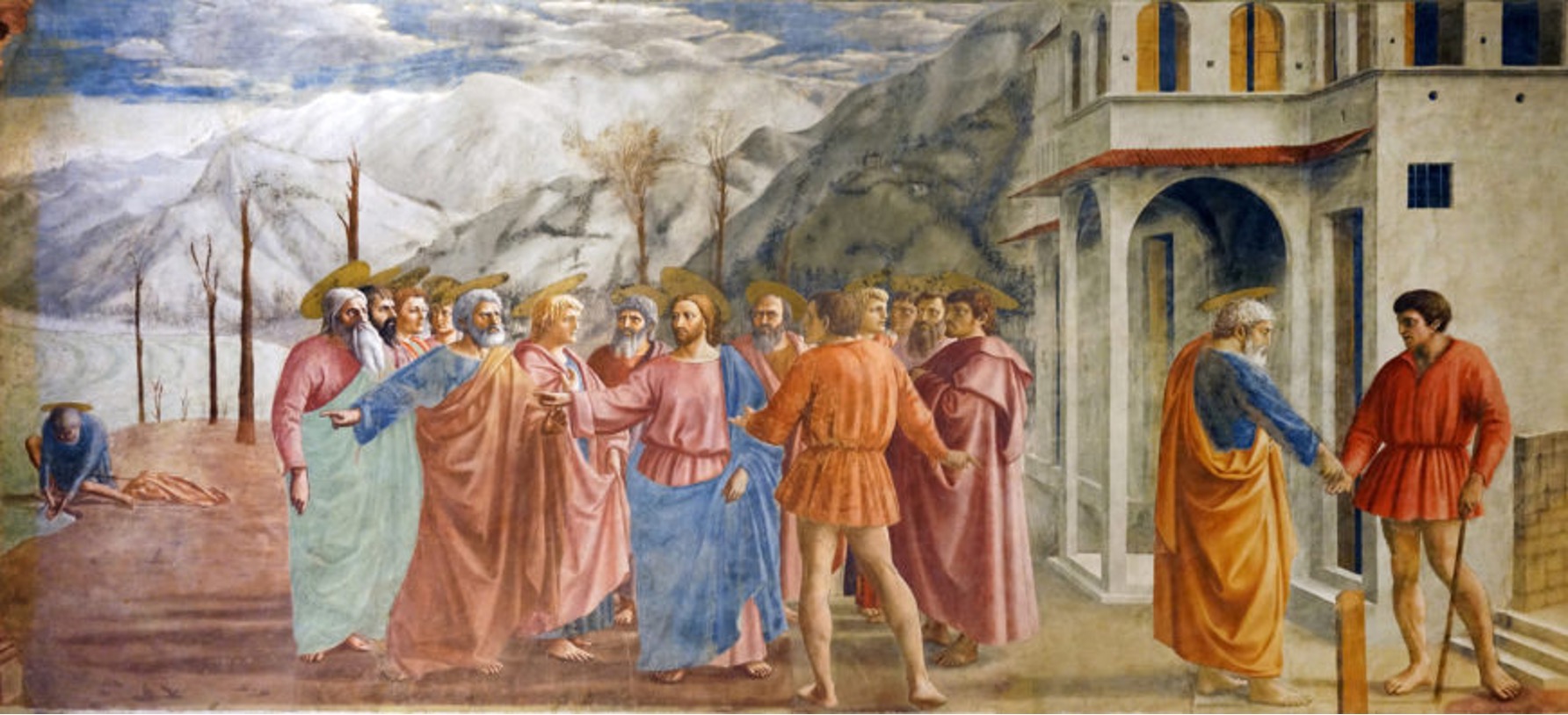
Masaccio, Tribute Money - 1425-1426 in the church of Santa Maria de Carmine
in church in Florence - Roman tax collectors told Jesus to pay - Jesus told Peter to open a fish’s mouth for money
Masaccio put all 3 scenes in the same picture
Used linear perspective - all diagonal lines converse onto Jesus
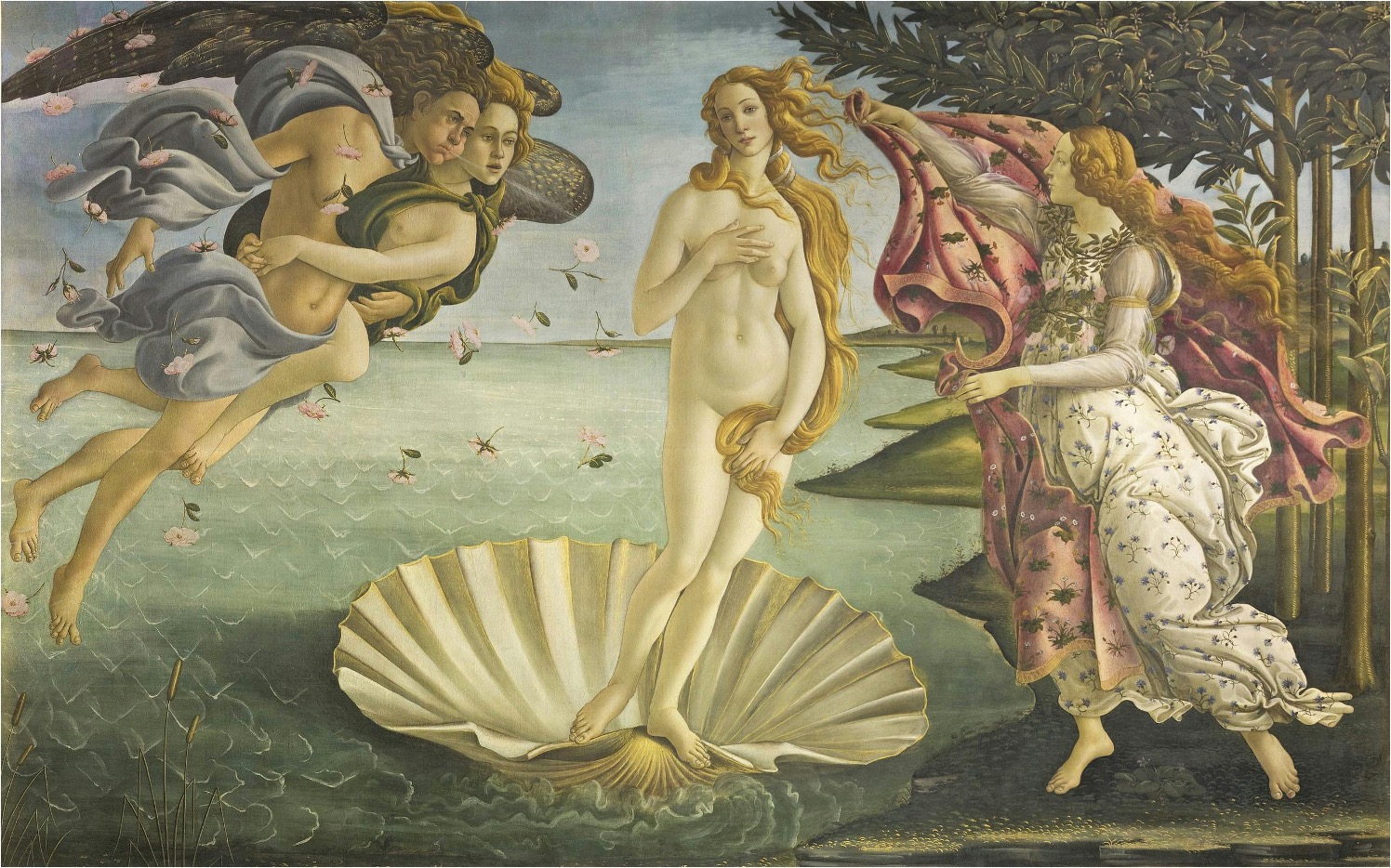
Sandro Botticelli, Birth of Venus - 1485-1486
Venus rising from Ocean, modeled after the “Medici Venus” so similar body position - took Christian subject matter and transformed into mythological
Goddess of love, idealism, celebration of beauty, humanism
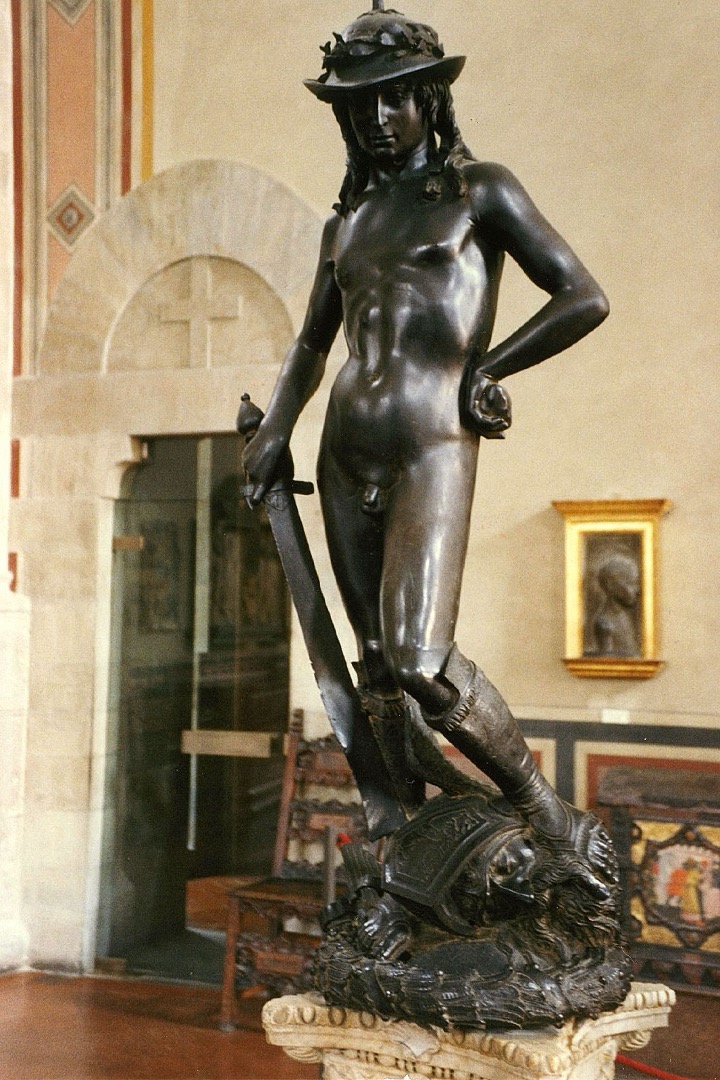
Donatello, David - 1440
Commissioned from Medici’s; depicts image of David + Goliath from Bible - David defends his people from Goliath with slingshot and stone
David becomes symbol of Florence
sassy, naturalistic, nude to equate to Greek God (shows his power because he is nude), early work of homoerotic art
Contrapposto
Placing one’s weight on one foot, allowing opposite hip to rise; creates a relaxed curve to the body
Takeaways from Tuesday Sep 10
While Florence was the birthplace of the Italian Renassance art, art theory, and literature, the “Renaissance” was a global phenomenon
Artists and authors alike turned to art and texts from Classical Antiquity as inspiration. They used the classical past as a template to redesign and reimagine their Christian present
One-point or linear perspective was invented during the Renaissance, but it was not the only way to depict space (think Sienese art)
Northern Europe
A term referring to modern-day Belgium, the Netherlands, northern France, and Germany
Northern Renaissance
A period of artistic innovation beginning in the 15th century, influenced by Protestantism, the development of a middle class, trade, and exploration/colonialism
Oil painting
Form of painting that uses pigment suspended in oil (not water or egg white); easier to manipulate, creates more vibrant colors
Realism
Depicting subjects faithfully, accurately, and in great detail without idealizing them
Secular
Not religious; refers to images that depict scenes from everyday life or non-religious figures
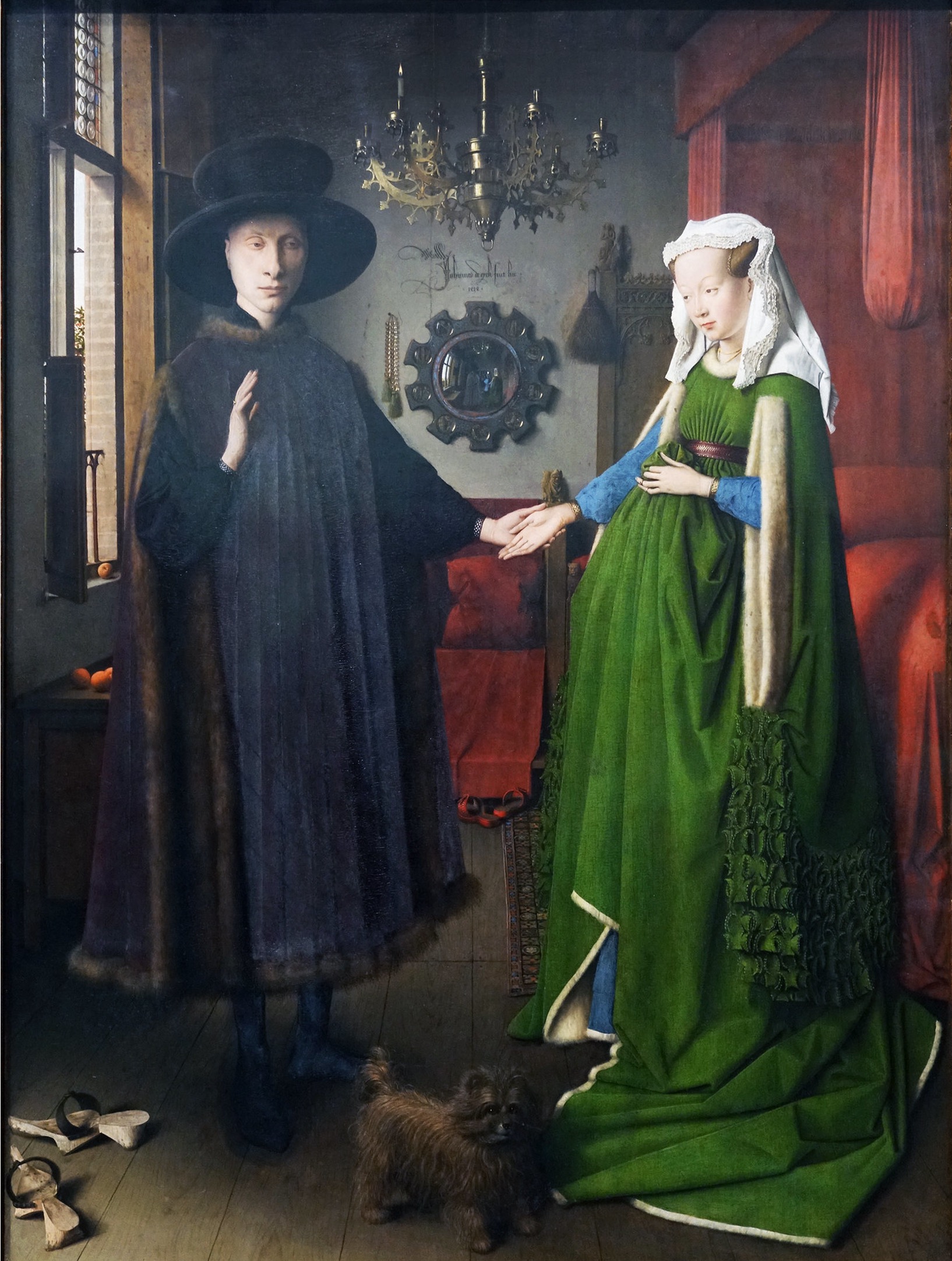
Jan van Eyck, The Arnolfini Portrait, 1434
Dress tailored for pregnancy - green symbolizes fertility - hope that women will be pregnant
Secular imagery
Orange symbolizes wealth, dog shows loyalty
Merchant
Someone who works as a trader of foreign commodities
Symbolism
Giving a real-world object an abstract meaning; x symbolizes y.
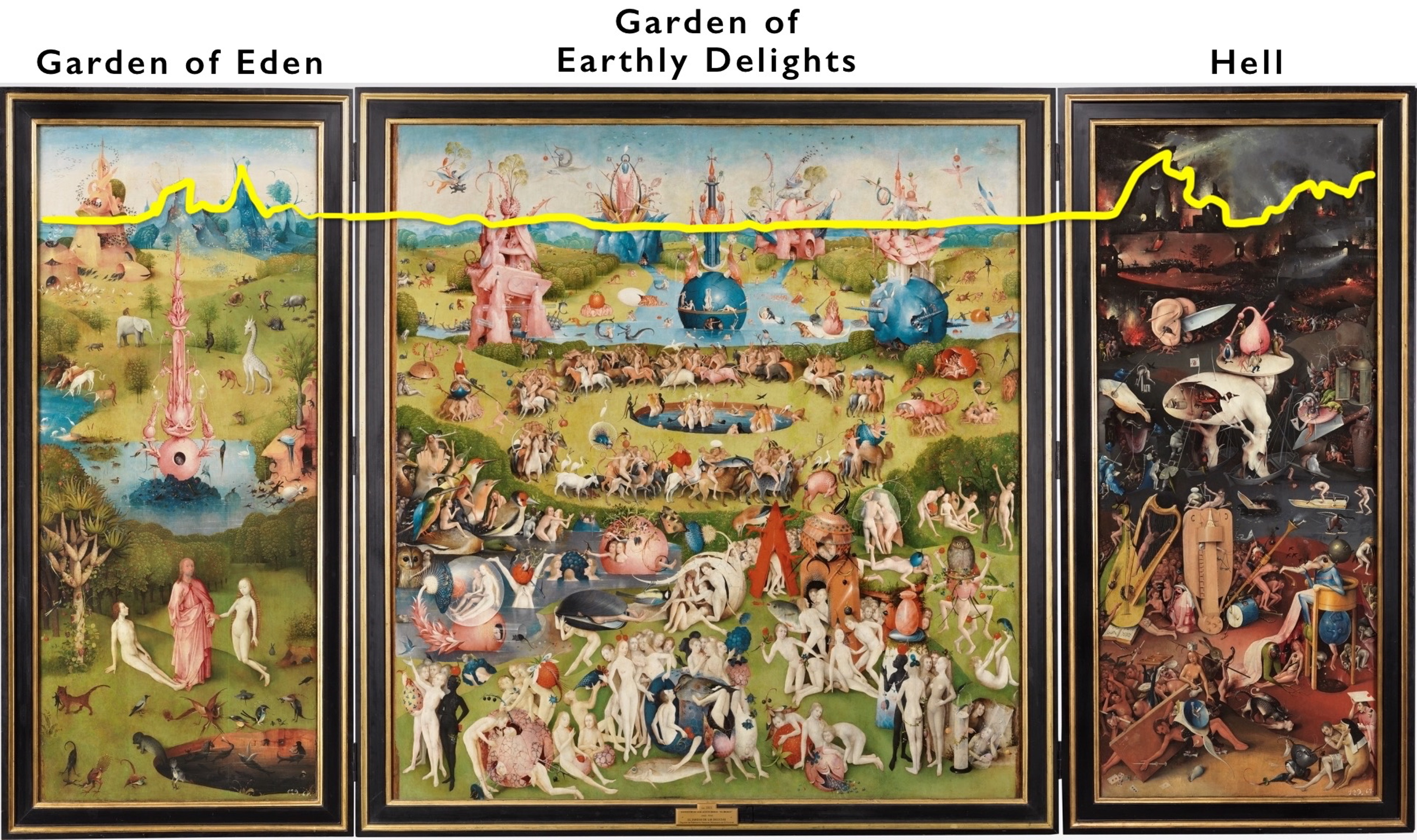
Heironymus Bosch, The Garden of Earthly Delights, 1490-1500
3 scenes, Garden of Eden, Garden of Earthly Delights, Hell
Work intended as a reminder of where sin gets you - sin now will have bad consequences later
Printmaking
The process by which image or text is transferred from a “matrix” to a “support”, usually paper. Allows for multiple exact copies.
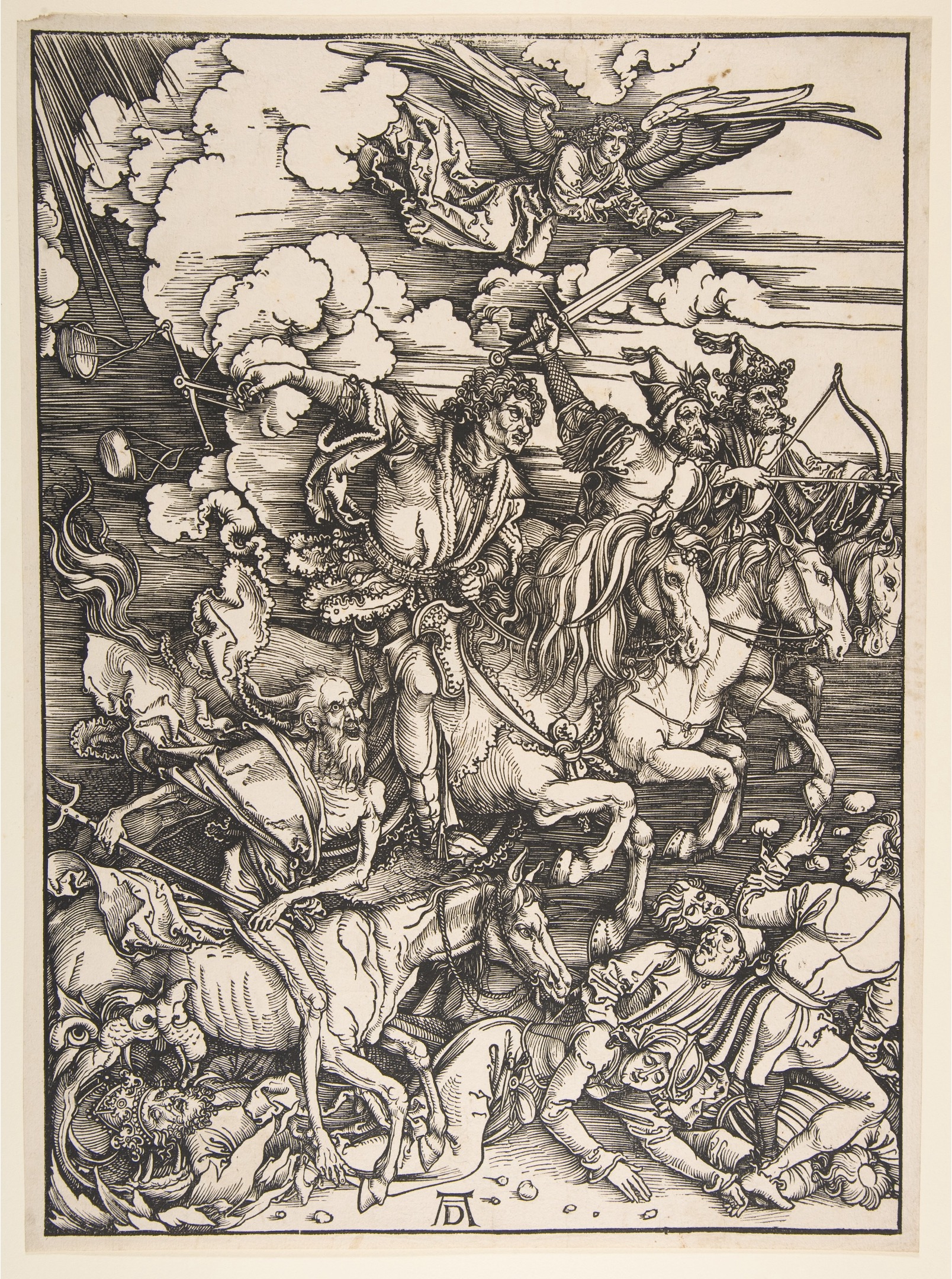
Durer, The Four Horsemen, from The Apocalypse, 1498
Depicting scenes from New Testament as world is ending
Woodcut image
Representations of death, famine, war, and plague
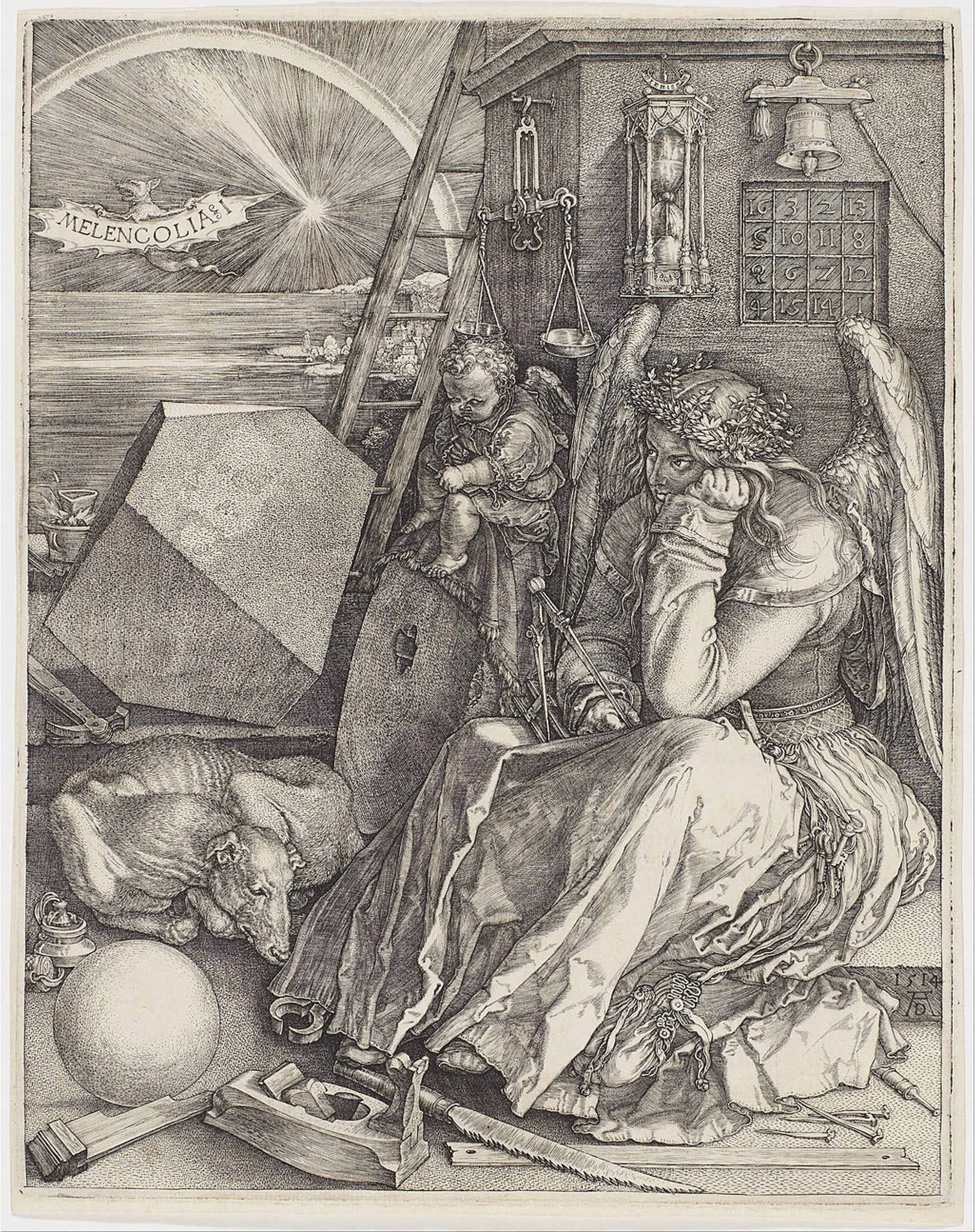
Durer, Melancolia, 1514
Depicts his own emotional state
Our body was controlled by four humors - excess of black bile causes melancholy
People who were melancholic were likely to go insane (but could also be geniuses)
Protestant Reformation
A 16th-century religious reform movement centered in Northern Europe; denounced the Catholic Church’s corruption and idolatry.
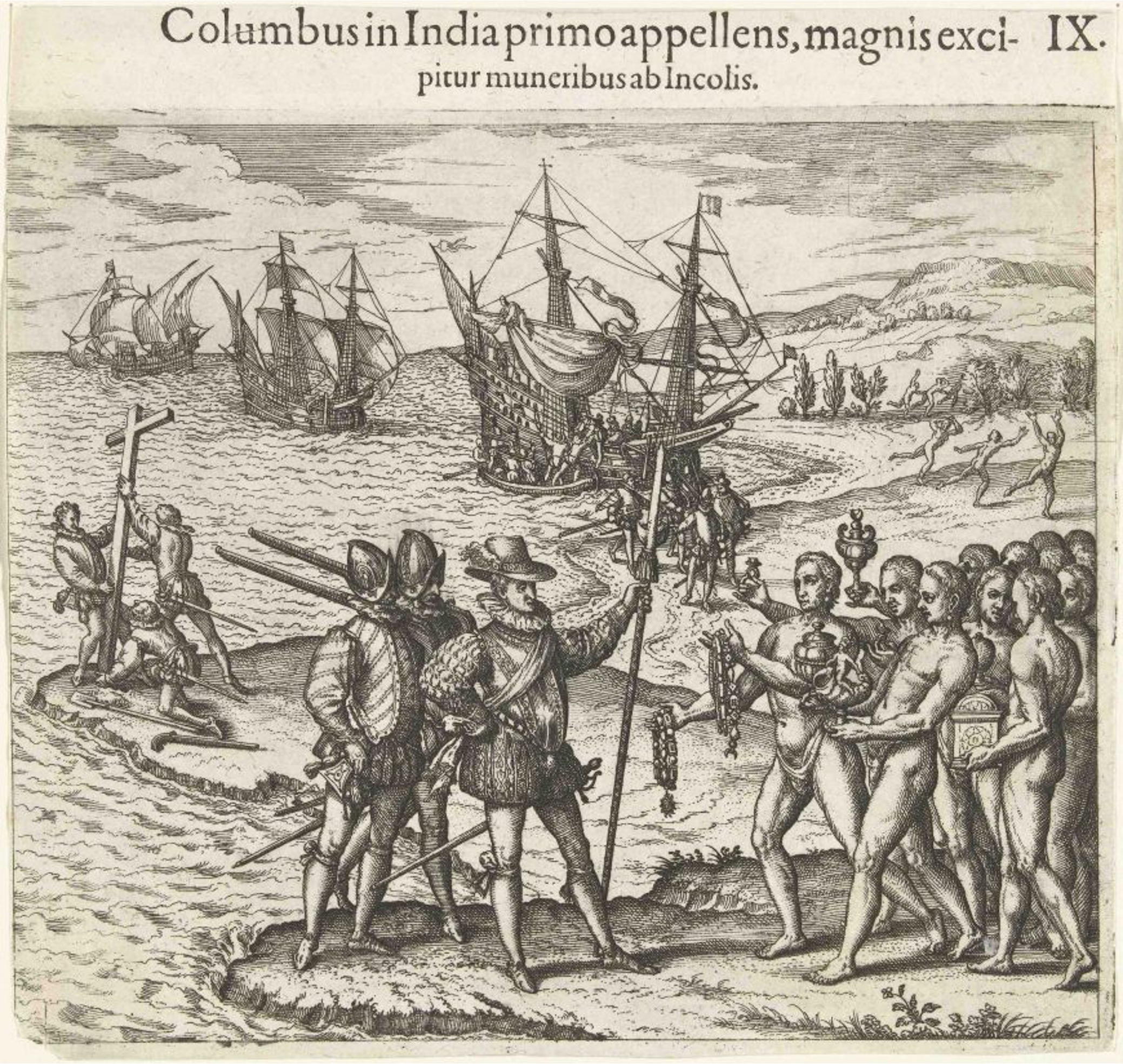
Theodore de Bry, Christopher Columbus arrives in America, 1594
Shows importance of bringing Christianity to the new world
Created works to show that the Natives needed “saving” and help to justify colonizing America
Prints were widespread